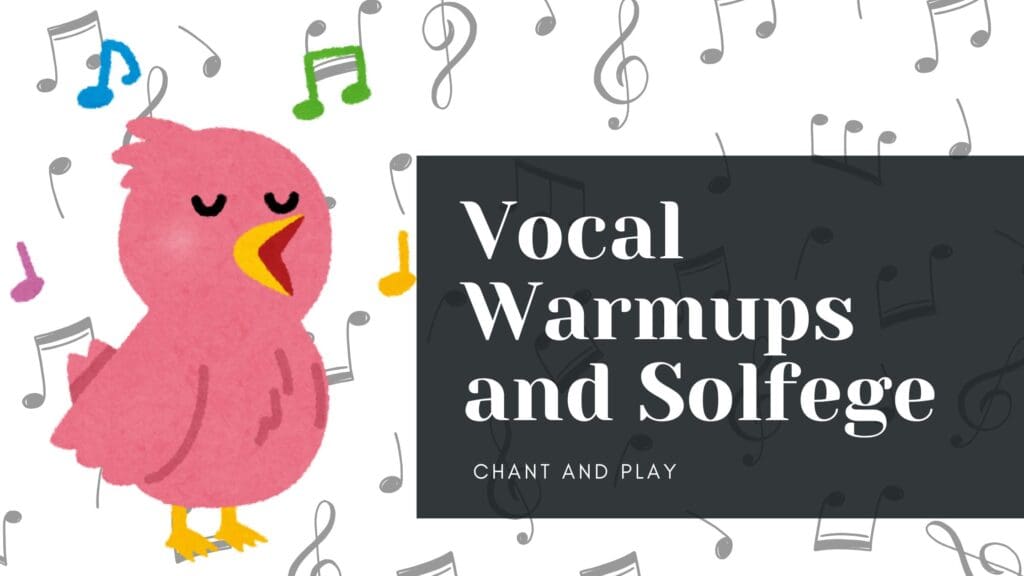The Importance of Teaching Vocal Warmups and Solfege to Young Children

Music is a language all its own, and just like spoken language, it’s best learned from an early age. Whether you’re a parent teaching your child at home or a tutor guiding young students, incorporating vocal warmups and solfege into music lessons can make a profound difference. These foundational techniques help children develop a strong musical ear, build confidence, and lay the groundwork for future musical success.
Why Vocal Warmups Matter
Vocal warmups are just as essential for young singers as stretching is for athletes. Here’s why:
- Prepares the Voice – Just like any muscle, the vocal cords need preparation before singing to avoid strain or discomfort.
- Improves Breath Control – Deep breathing and controlled exhalation exercises help children support their voices better.
- Enhances Clarity and Projection – Articulation exercises improve diction and vocal tone.
- Encourages Confidence – Fun, engaging warmups help children feel comfortable using their voices.
Simple warmups like humming, lip trills, and sirens (sliding up and down in pitch) make singing feel natural and enjoyable. Games and playful approaches keep children engaged while gently strengthening their vocal abilities.
The Power of Solfege
Solfege (Do-Re-Mi) is a time-tested method of teaching pitch and ear training. It’s a fundamental part of music education, and here’s why it’s especially helpful for young learners:
- Develops Pitch Accuracy – Singing notes with solfege syllables trains children to recognize and reproduce pitches correctly.
- Builds Musical Memory – Associating syllables with specific pitches strengthens a child’s ability to remember and recall melodies.
- Lays the Foundation for Sight-Singing – Reading music becomes easier when children can associate notes with familiar sounds.
- Makes Learning Engaging – Using hand signs or movement with solfege helps reinforce concepts in a multisensory way.
Charlotte Mason’s Approach to Music Education
Charlotte Mason, a pioneer in education, emphasized a gentle, natural approach to learning music. Her method aligns beautifully with teaching solfege to young children by making music an enjoyable and organic part of their daily lives.
- Short, Consistent Lessons – Keep music lessons brief but frequent to maintain attention and retention.
- Learning by Ear – Encourage children to listen and imitate rather than relying on written music too soon.
- Singing First – Children should experience music through singing before moving on to instruments or written notation.
- Foster a Love for Music – Instead of rigid drills, make solfege and warmups fun through songs, rhymes, and play.
Making It Fun and Engaging
Children learn best through play and exploration. Here are some tips for making vocal warmups and solfege enjoyable:
- Use Games – Try call-and-response exercises or musical “Simon Says.”
- Incorporate Movement – Hand signs, clapping, or stepping to beats reinforce learning.
- Sing Familiar Songs – Applying solfege to well-known tunes makes learning feel natural.
- Be Playful – Funny voices, silly sounds, and imaginative storytelling keep young learners engaged.
Conclusion
Vocal Warmups and Solfege
Teaching vocal warmups and solfege to young children sets the stage for a lifelong love of music. These simple yet powerful techniques nurture their musical abilities, improve listening skills, and boost confidence. By following a natural and playful approach—especially one inspired by Charlotte Mason—you can help your child or students develop a strong musical foundation while keeping learning joyful and engaging. So warm up those voices, sing some Do-Re-Mis, and enjoy the magic of music together!